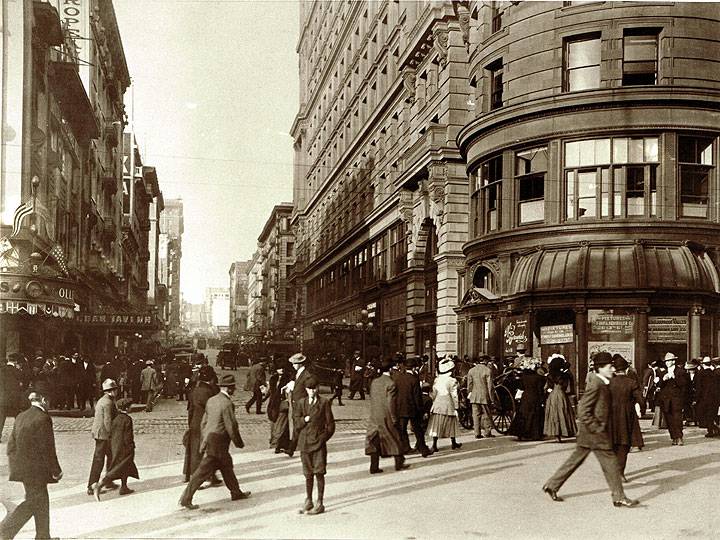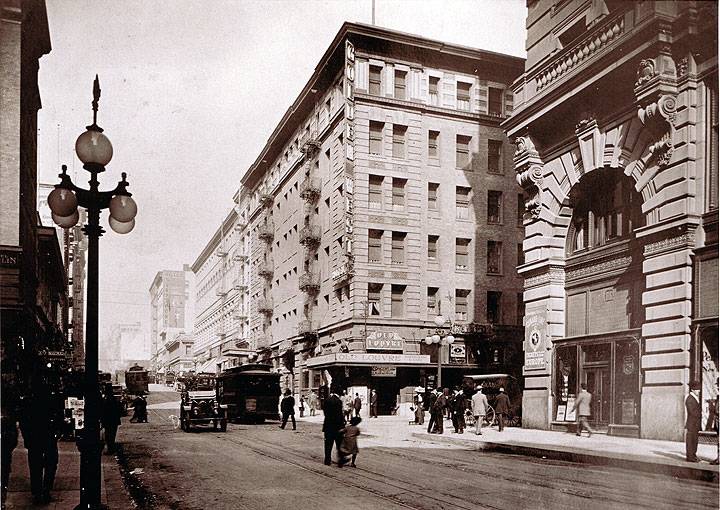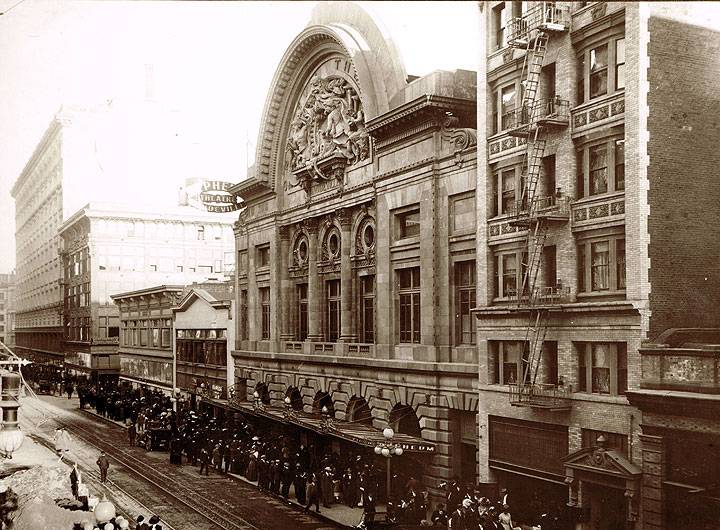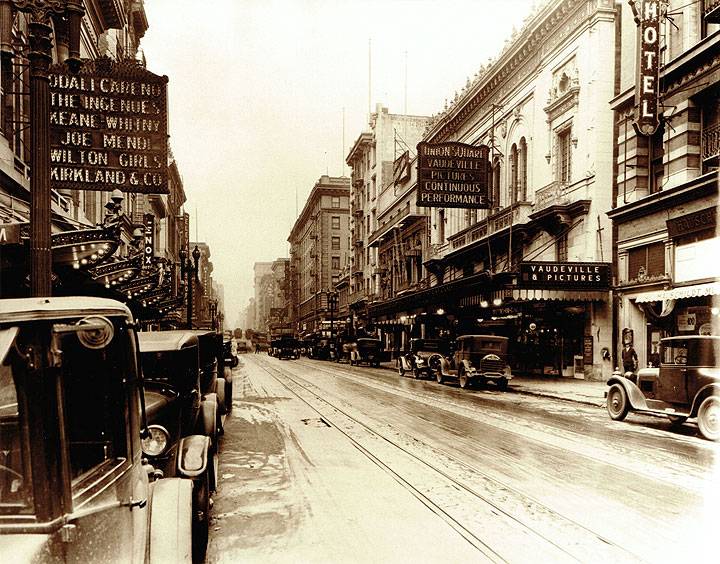Tenderloin Before Prohibition: Difference between revisions
(Created page with ''''<font face = Papyrus> <font color = maroon> <font size = 4>Primary Source</font></font> </font>''' ''from WPA in the 1930s'' The windswept corner at Powell and Market begins...') |
(added link) |
||
| Line 7: | Line 7: | ||
[[Image:Powell-and-market-techau-tavern-c-1910s.jpg]] | [[Image:Powell-and-market-techau-tavern-c-1910s.jpg]] | ||
'''Powell and Market, Techau Tavern at left, c. 1910.''' | '''Powell and Market, [[Techau Tavern|Techau Tavern]] at left, c. 1910.''' | ||
''Photo: Private collection'' | ''Photo: Private collection'' | ||
Revision as of 23:29, 10 June 2020
Primary Source
from WPA in the 1930s
The windswept corner at Powell and Market begins a gay, devil-may-care street that has for better than half a century fascinated and delighted both native and visitor. Unlike the tiny slow cable cars that clang up and down the Powell Street hill to be reversed on the turntable at Market Street, life always has run fast and little loose along this narrow urban canyon. On the east corner of Powell and Market stood the Baldwin Theater, housed within a hideously ornate hotel of the period. Around the corner on Eddy Street was the Tivoli Theater, where patrons sat at tables and ate and sipped refreshments while watching the performance. Although the fire of 1906 razed the entire area, Powell Street and environs maintained their reputation by immediately rebuilding. The district became known as the “Uptown Tenderloin.” Until the Eighteenth Amendment relegated pleasure spots to back rooms, it was replete with lively restaurants, saloons and cabarets—whose names make older residents yearn for the “good old days.”
Powell and Market, Techau Tavern at left, c. 1910.
Photo: Private collection
Portola Louvre at Powell and Ellis, c. 1910.
Photo: Private collection
Techau Tavern stood on the site of the present bank at the southwest corner of Powell and Eddy; the Portola Louvre, across the street. Around the corner at 35 Ellis Street was the Heidleberg Inn, and at 168 O’Farrell, the famous old Tait-Zinkand cabaret, across from the Orpheum Theater where vaudeville was born.
Orpheum Theater were vaudeville was born on O'Farrell Street, c. 1910.
Photo: Private collection
Fabulous Tessie Wall kept her red plush and gilt bagnio on the southwest corner of Powell and O’Farrell—Tessie Wall, who reigned before Prohibition as “Queen of the Tenderloin,” whose answer to her husband, gambler Frank Daroux, when he asked her to move to a suburban home in San Mateo is still quoted: “San Mateo! Why I’d rather be an electric light pole on Powell Stret than own all of the county.” Mason Street, one block west of Powell, was the “White Way,” sparkling with the lights of Kelly’s place, Jimmy Stacks’ cabaret, the later Poodle Dog, and Billy Lyons’ saloon, “the Bucket of Blood.”
Union Square Vaudeville Theater, c. 1919.
Photo: Private collection




